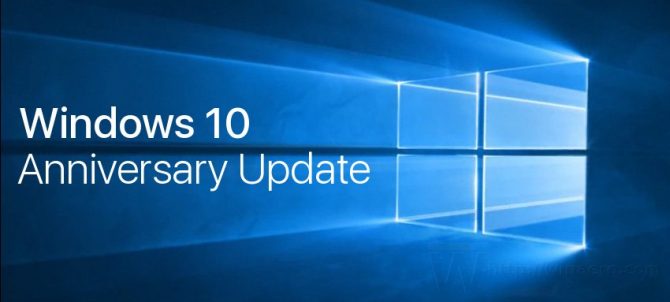A year ago, Microsoft released the first version of Windows 10, free as an upgrade for individuals using Windows 7 or 8/8.1. A constant stream of improvements and security updates have been forthcoming from Microsoft since then, including a relatively large update back in November. But the upcoming Anniversary Edition will be the first major overhaul of the operating system, and it is set to be released to everyone tomorrow, August 2nd.

This new edition will be the first one that owes a great deal to the Insider Program, which allows users to "preview" new versions of Windows 10 in return for bug reports. Microsoft has apparently released twenty five different Insider Anniversary editions, each progressively improved, though most were probably just minor bugfixes. Microsoft claims that many of the changes that will be seen in the Start menu, Taskbar and Action Center were driven by feedback from the Insider Program, which indicates a shift in the way they are developing their operating system, especially if you consider their tone deaf responses to the interface introduced with Windows 8.
If you are currently running Windows 10, fully updated, you will not have issues with hardware requirements in Windows 10 Anniversary Edition, for there are no major shifts in the requirements. The situation for new computers from original manufacturing companies is a little different, as the Anniversary Edition now requires a small increase in RAM, 2 GB minimum, and it requires the new machines to include TPM 2.0, usually in a discrete chip on the motherboard. TPM is generally being used to combat malware and provide more secure encryption of hard disks.
Many of the new changes are concentrated on the user interface, including some changes to the Start Menu, and various controls. Cortana's role has been expanded, and Skype has been reworked as well. The Edge browser now supports extensions and, by all reports, is very nearly usable as a primary browser. There are lots of other additions, including a beta program for allowing use of Linux applications on Windows, but for a more in depth look at the system, I suggest reading Peter Bright's article at Ars Technica.
Windows as a service, receiving major updates on a regular schedule is now with us. My hope is that the update goes a little more smoothly than my experience with the one released in November. If Microsoft can make these transitions painless, they will win more converts to their latest operating system. And indeed, reports show that businesses are moving a little more quickly in adopting it, though this update isn't a driving force for that change.
















